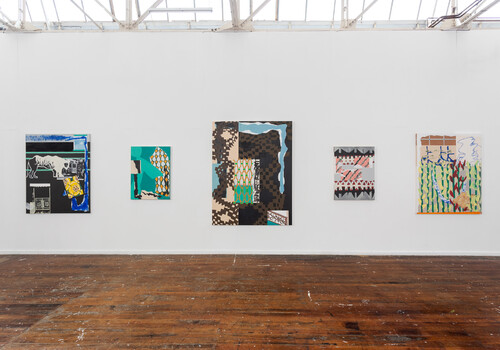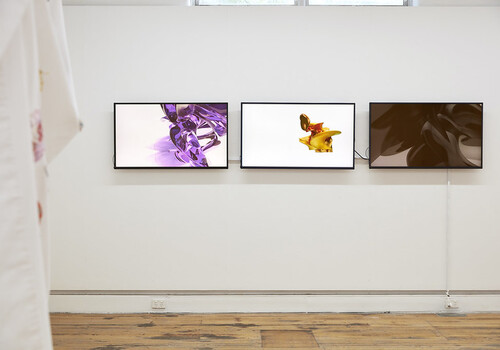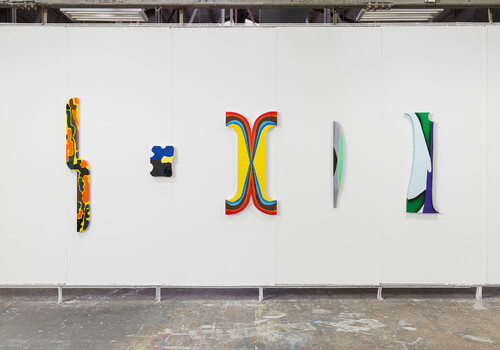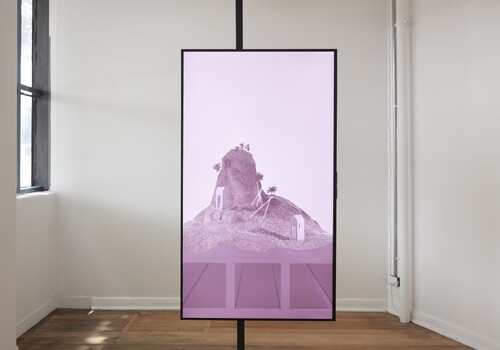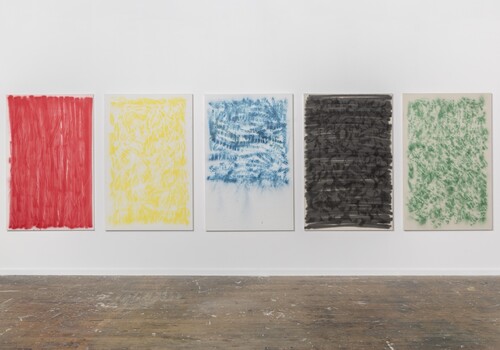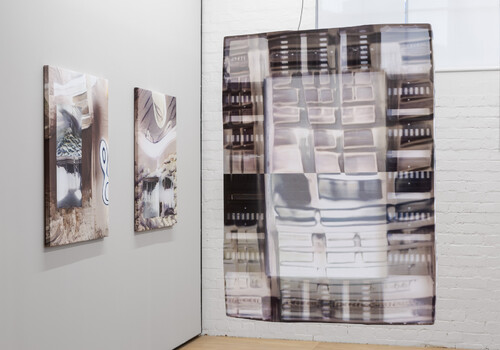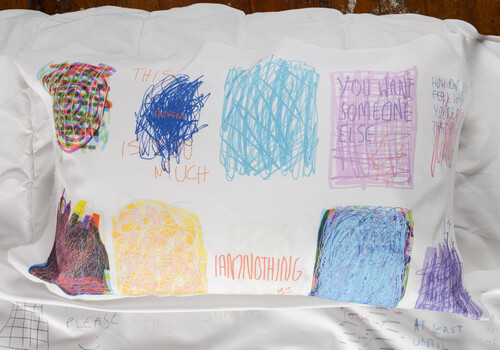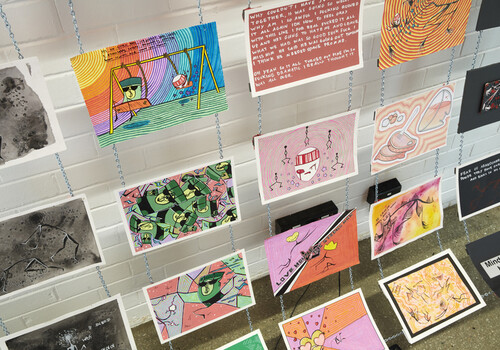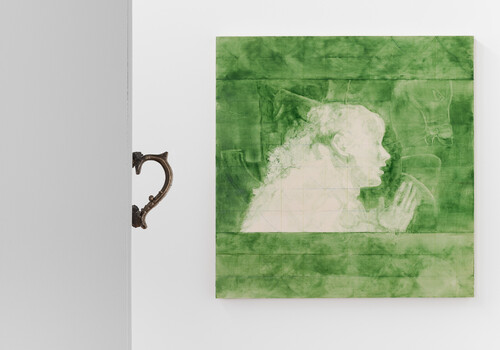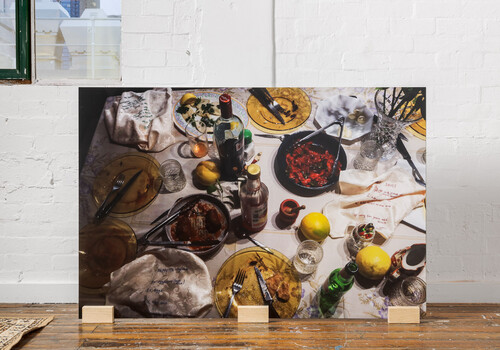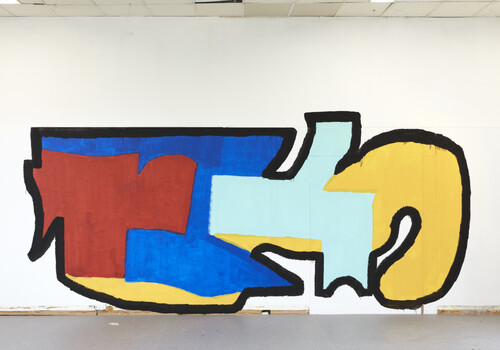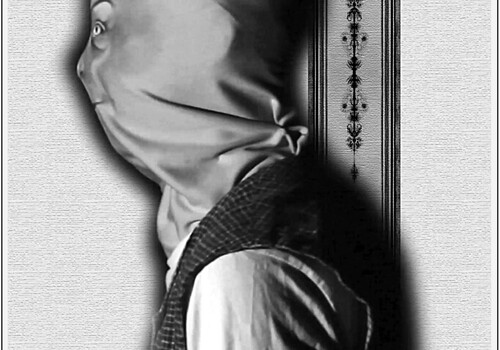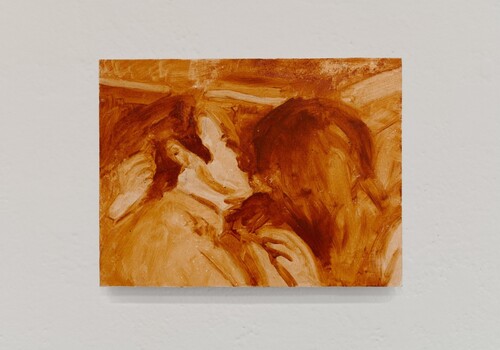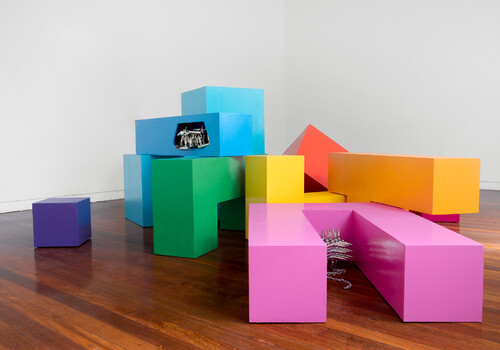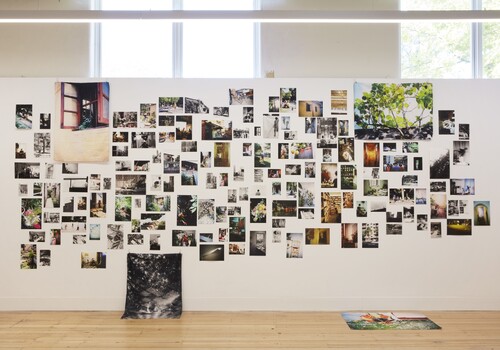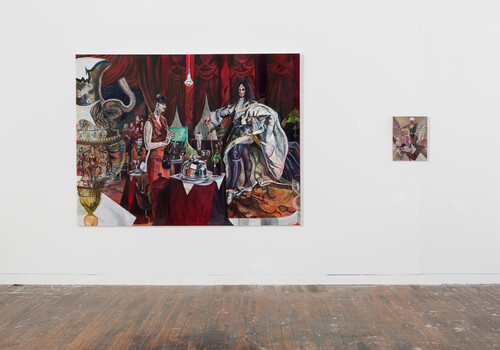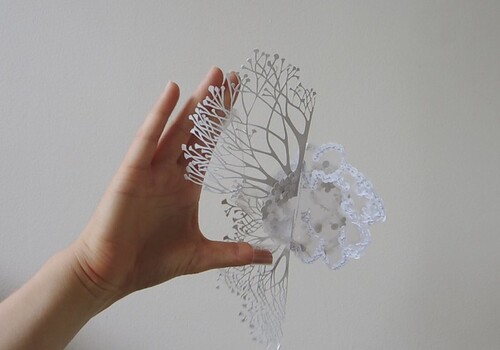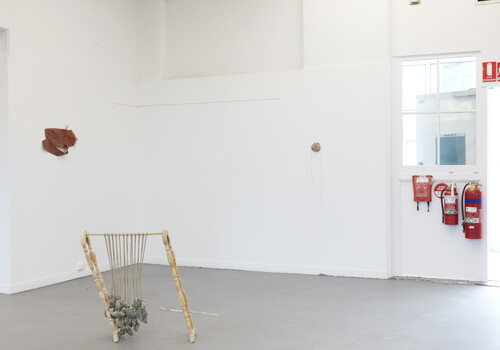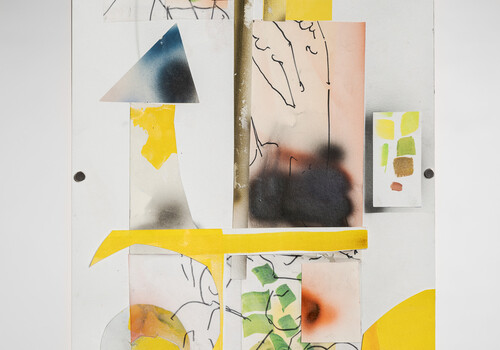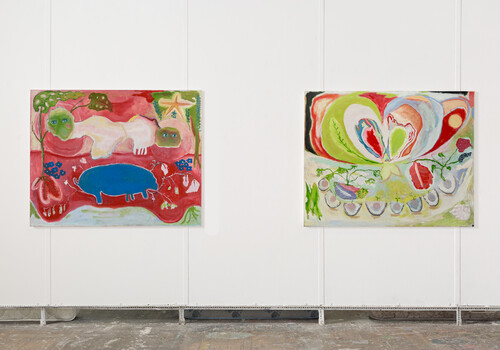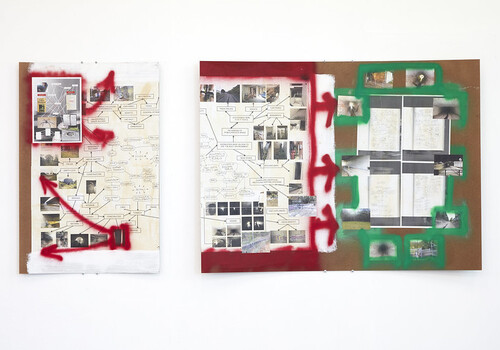Sculpture, Victorian College of the Arts
By Ella Worth
A whirlwind tour of more than seven hundred works proved that the reshaping forces of COVID would not quash the creative output of the tenacious 2020 VCA graduating students. With only “industry people” permitted to attend, the onus to convey how satisfying this show was to see IRL feels urgent. For in this most unprecedented year, a much needed and unexpected sense of play prevailed, particularly in the sculptural works.
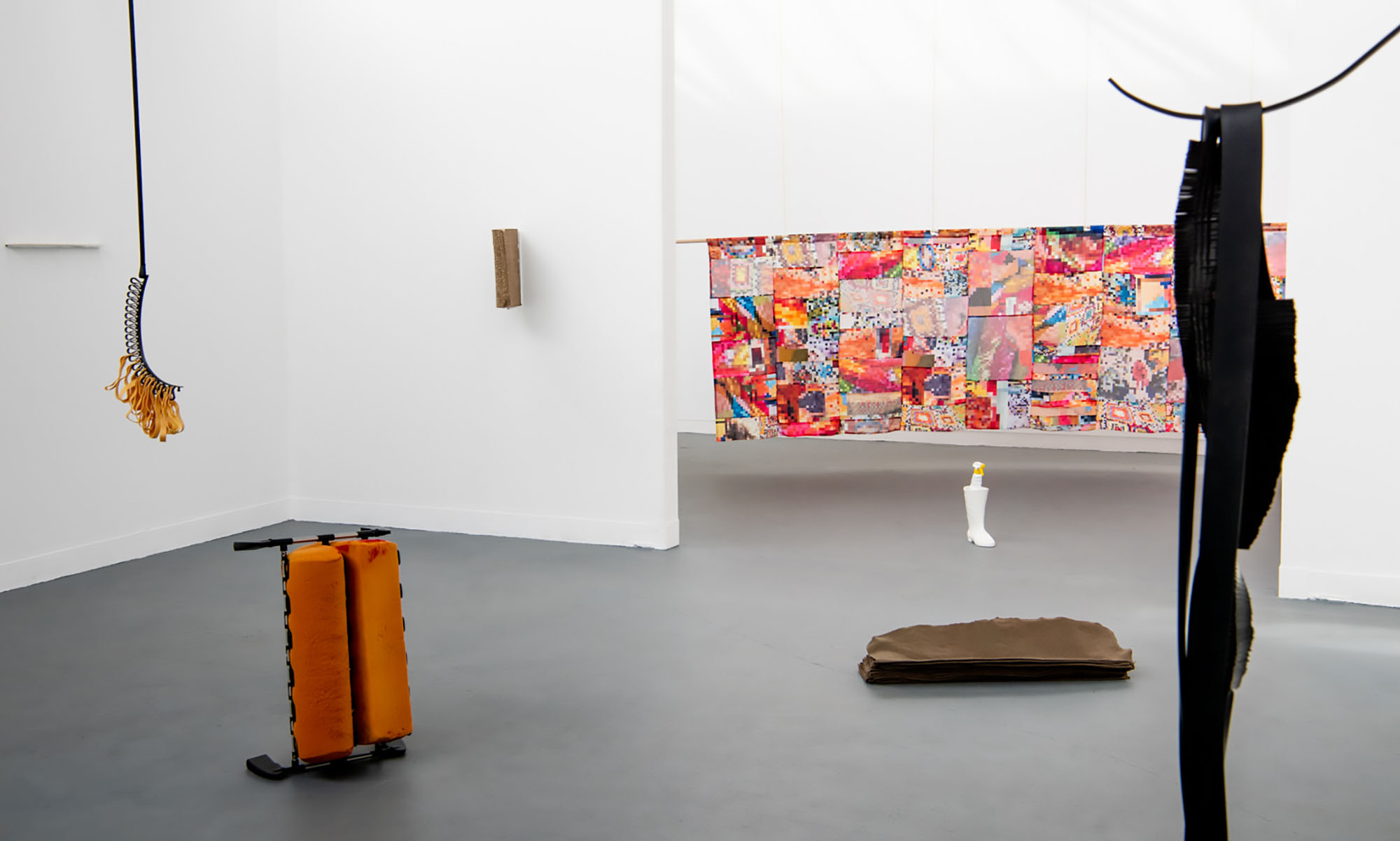
On entry, the delicate fabric panels of Lana Kotro’s textile work, PATCH, wave like the welcome of an overexcited child. The huge banner is an amalgamation of vivid, pixelated colour reminiscent of zoomed in images on a digital display, interconnected Lego or Minecraft screenshots. In actuality, it’s obfuscated imagery of her previous works conjoined to form a personal history patchwork as a last hurrah to her student oeuvre. The medium is Kotro’s way of weaving herself into the history of women’s art.
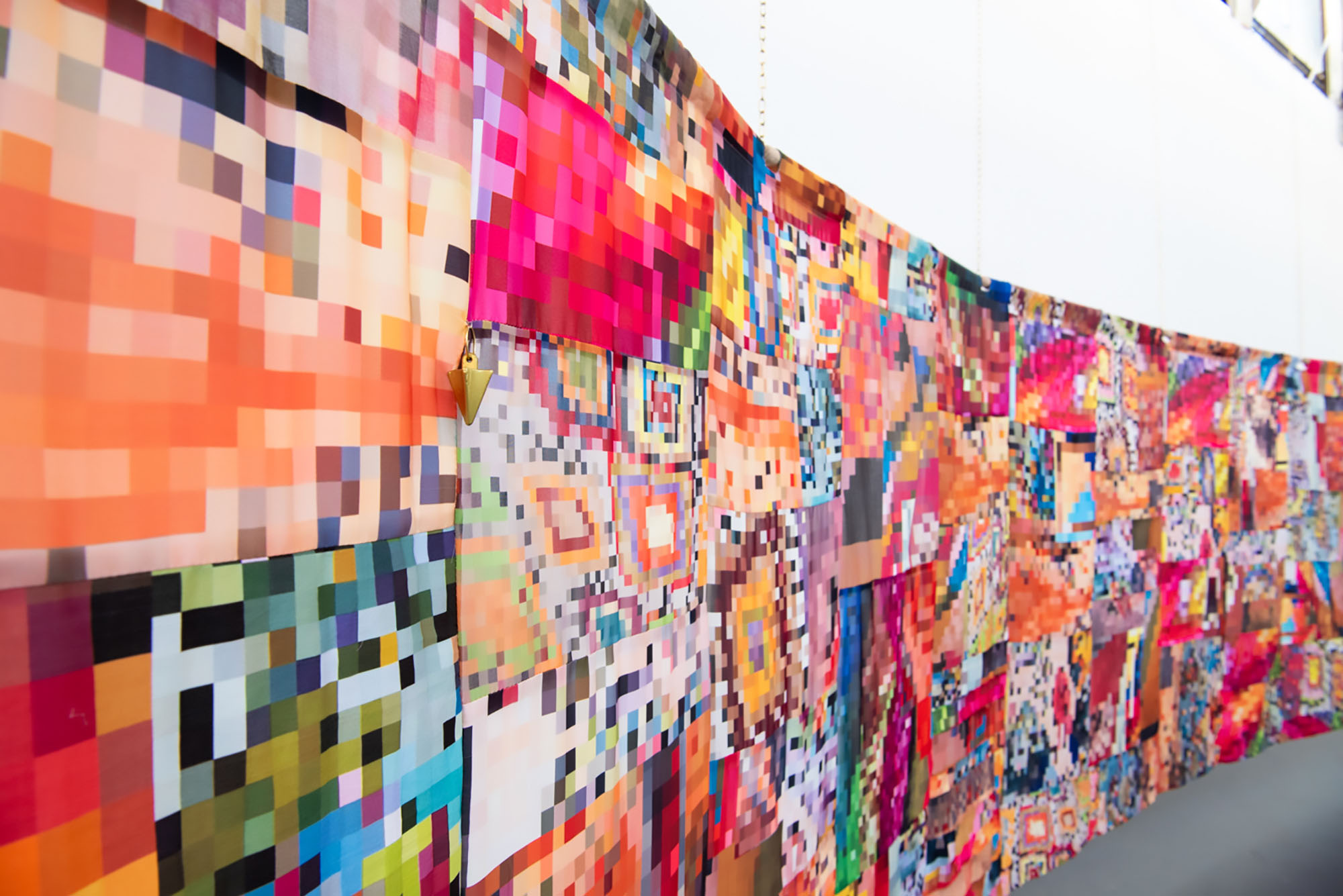
Anna Jalanski’s installation also explores women’s work, offering an experience of domestic fatigue accompanied with joyful mania (like a 1950’s housewife who’s been prescribed ecstasy for anxiety). Household items are paired and manipulated into tense reconfigurations that remind us wherever there is comfort, there is pain, exemplified by E=-, a cardboard filter crammed with toothpicks. But it’s an overwhelming sense of play that dominates Jalanski’s work, as seen in B, a cushion forcibly wedged into a dishrack to look like a butt with penguin feet. The thrill she perpetuates creating new art objects is palpable and produces a distinctly surrealist quality.
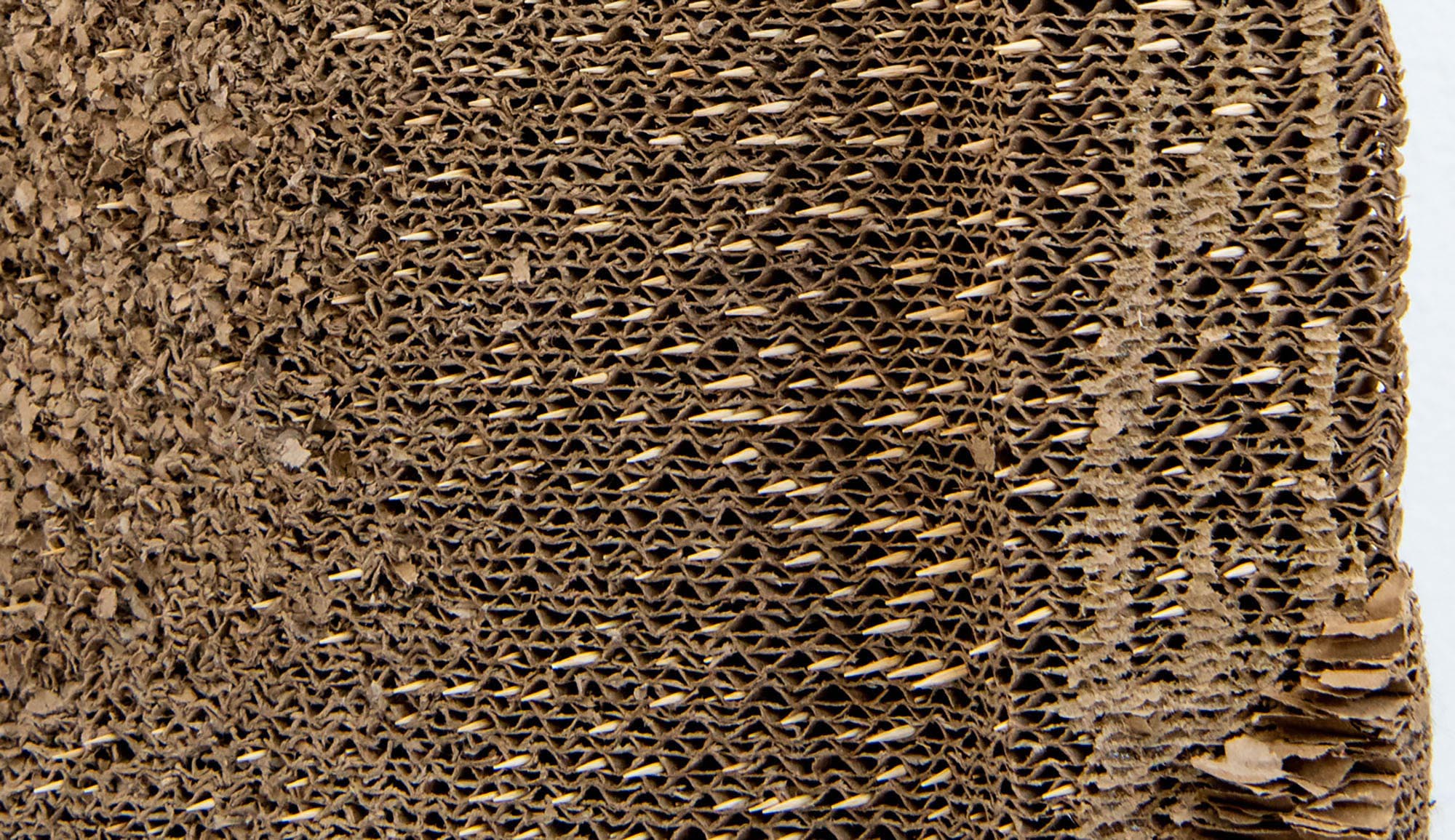
This good humour is continued by Charles Harding. His LED sign proclaiming: Down there doesn’t look so bad from up here echoing Marie Antoinette’s, “let them eat cake!” can be read ironically as an example of the typical disassociation displayed during COVID lockdown freak-outs (as evidenced by Karen from Brighton). Harding’s Self-Portrait depicting the artist in full corporate attire with his head literally buried in the sand produced smirks, but it was; I had this great idea once But I forgot to write it down that rung true to the memories of my art school daze.
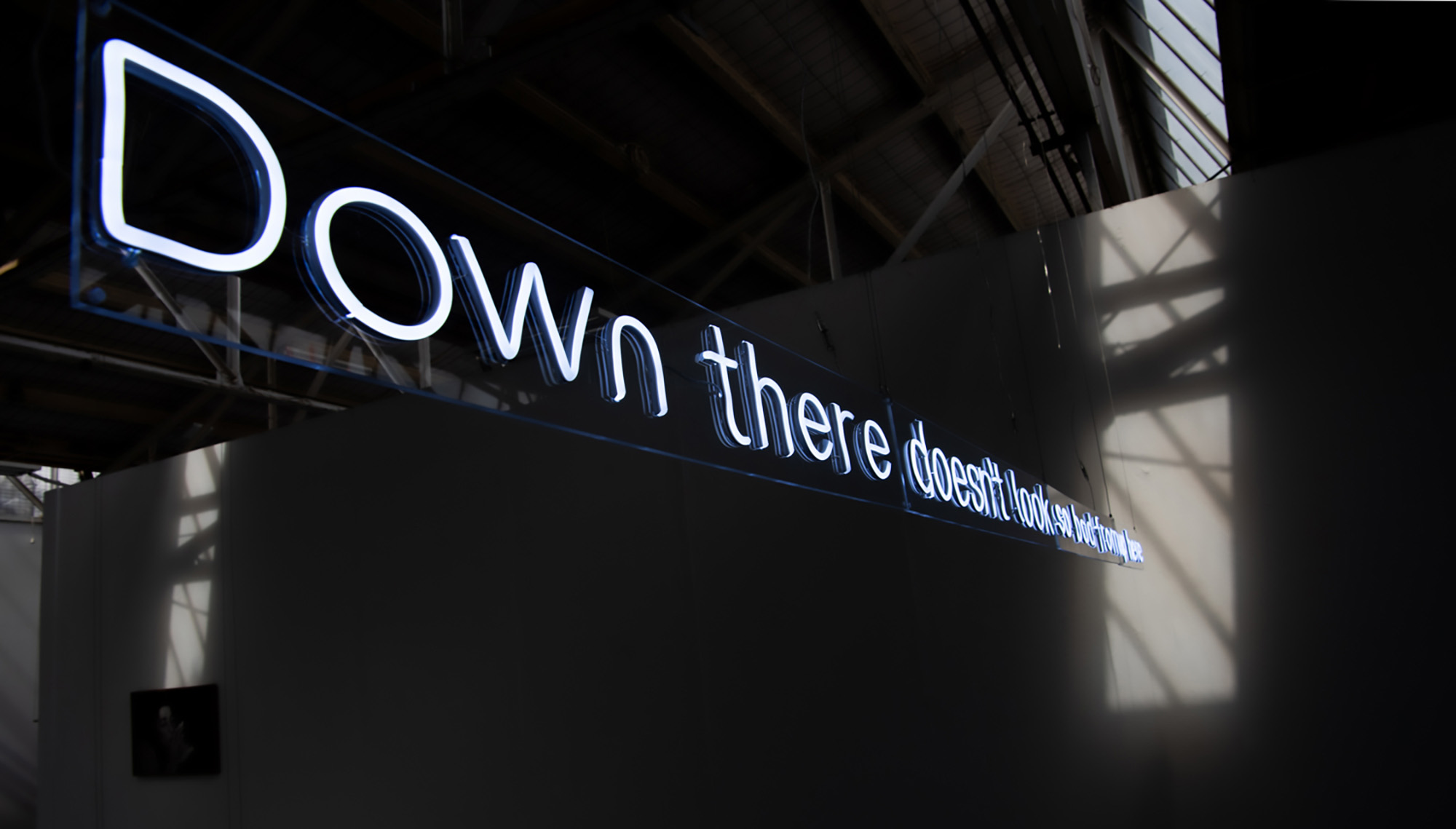
Equally nostalgic, Tom Bourke delivers the candy-coloured comfort of childhood in Child’s Play. The oversized blocky structures are suggestive of 1980’s gameplay components like tetrominoes or Lego bricks belie hidden hazards. Concealed like easter eggs in the giant building blocks are two shiny, sinister threats: one, a flail from medieval weaponry, and the other, a transformer-looking-robot, both gleaming with fetish-like spikes that remind us there’s no fun in play without the threat of danger.

It’s a theme that carries into Britt d’Argaville’s work. ROUGE À LÈVRES in steiner mimics three moist red lipsticks. The curvaceous cherry mounds lean precariously against a rack of appropriated seats featuring maracas. Traditionally used to heal the sick, d’Argaville inverts their purpose by filling her instruments with ashes. Dying to be the life of the party (Angel), makes light of the macabre by celebrating the symbiotic relationship between life and loss. Combined, her works retell the age-old, double whammy of sex and death.
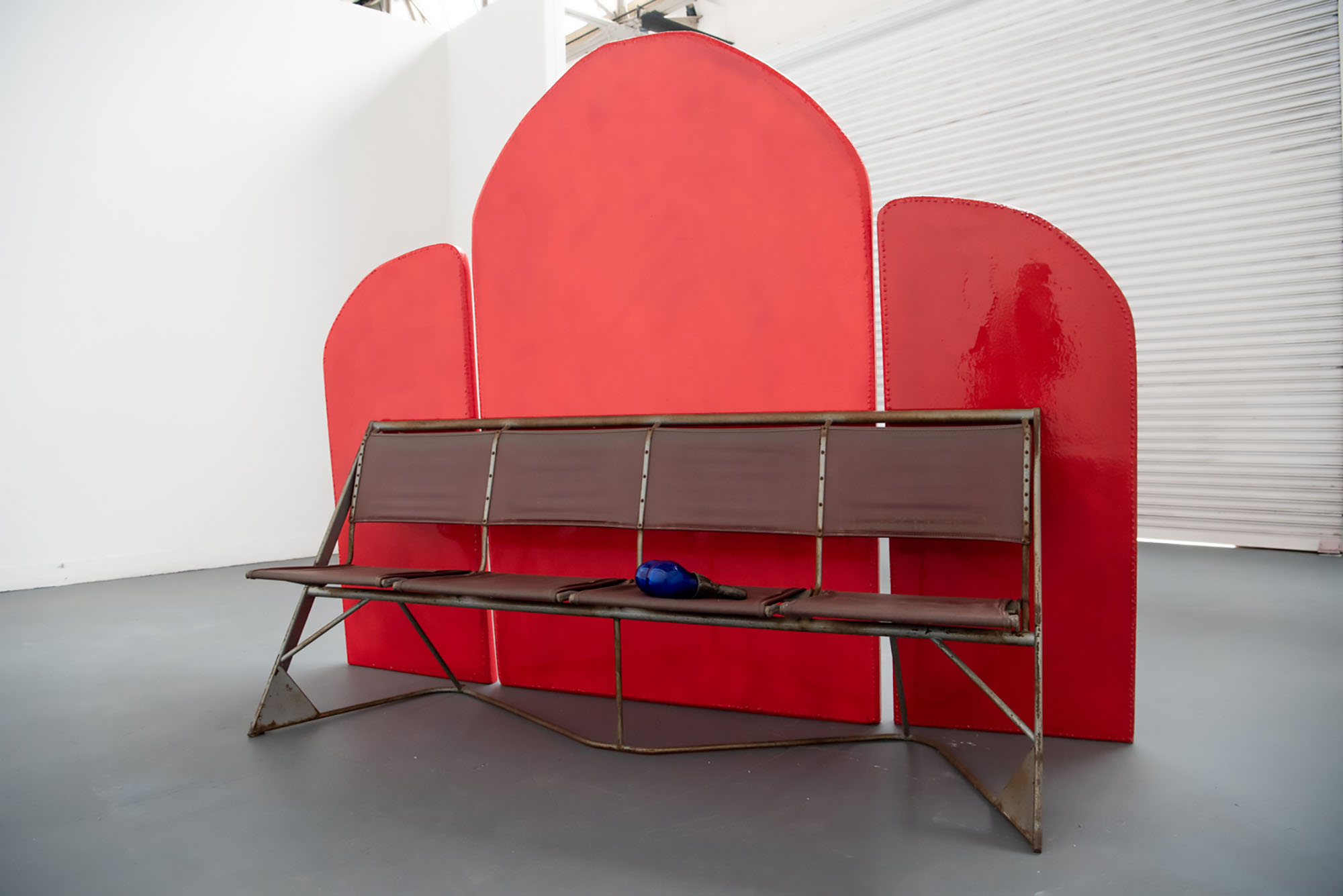
The common thread of introspection throughout these works highlights the solace we seek in the familiarity of domestic rituals and the escapism of games. In play we forget ourselves and the thin societal veneer that keeps us from loneliness. Perpetuating a sense of fun in this year derailed by COVID seems like an act of self-preservation that we can all relate to.
Ella Worth is an Art History Honours student at the University of Melbourne. After completing a BA in Fine Art & Multimedia Design at Curtin University in 2003, she co-ran a creative agency until commencing a Graduate Diploma in the History of Art at UWA in 2016. She is a low-brow collector and advocate for the transformative power of art.
